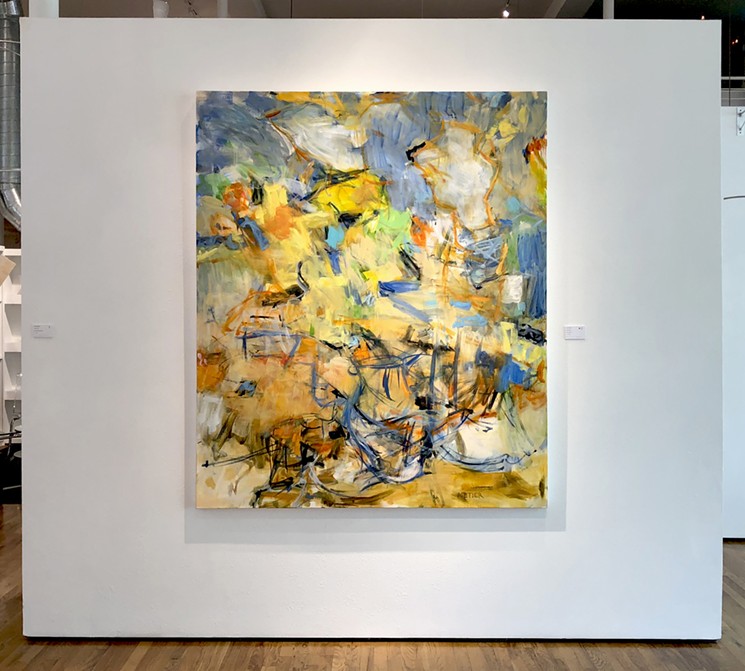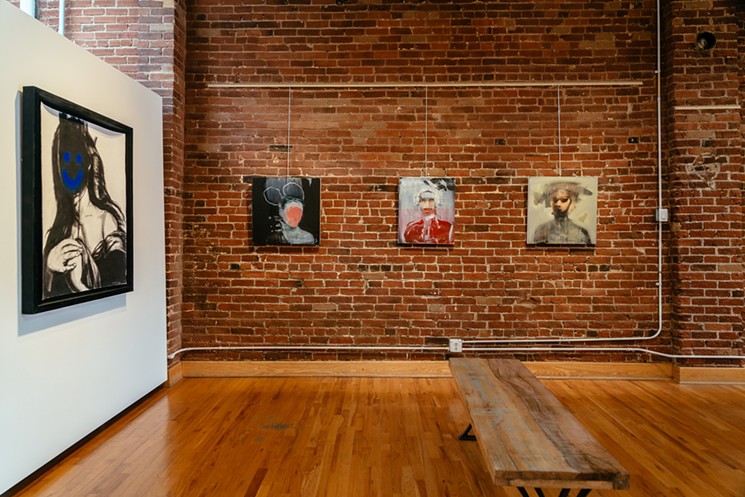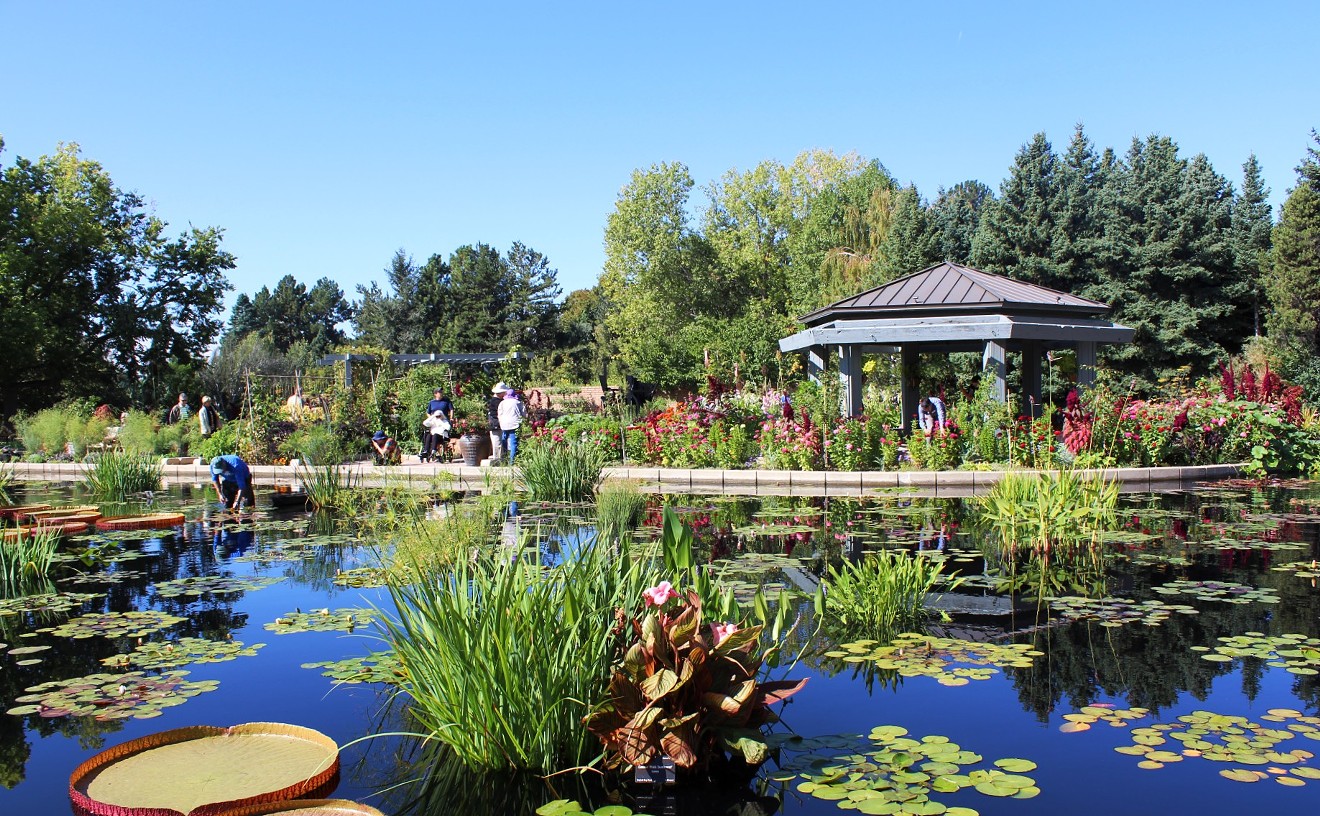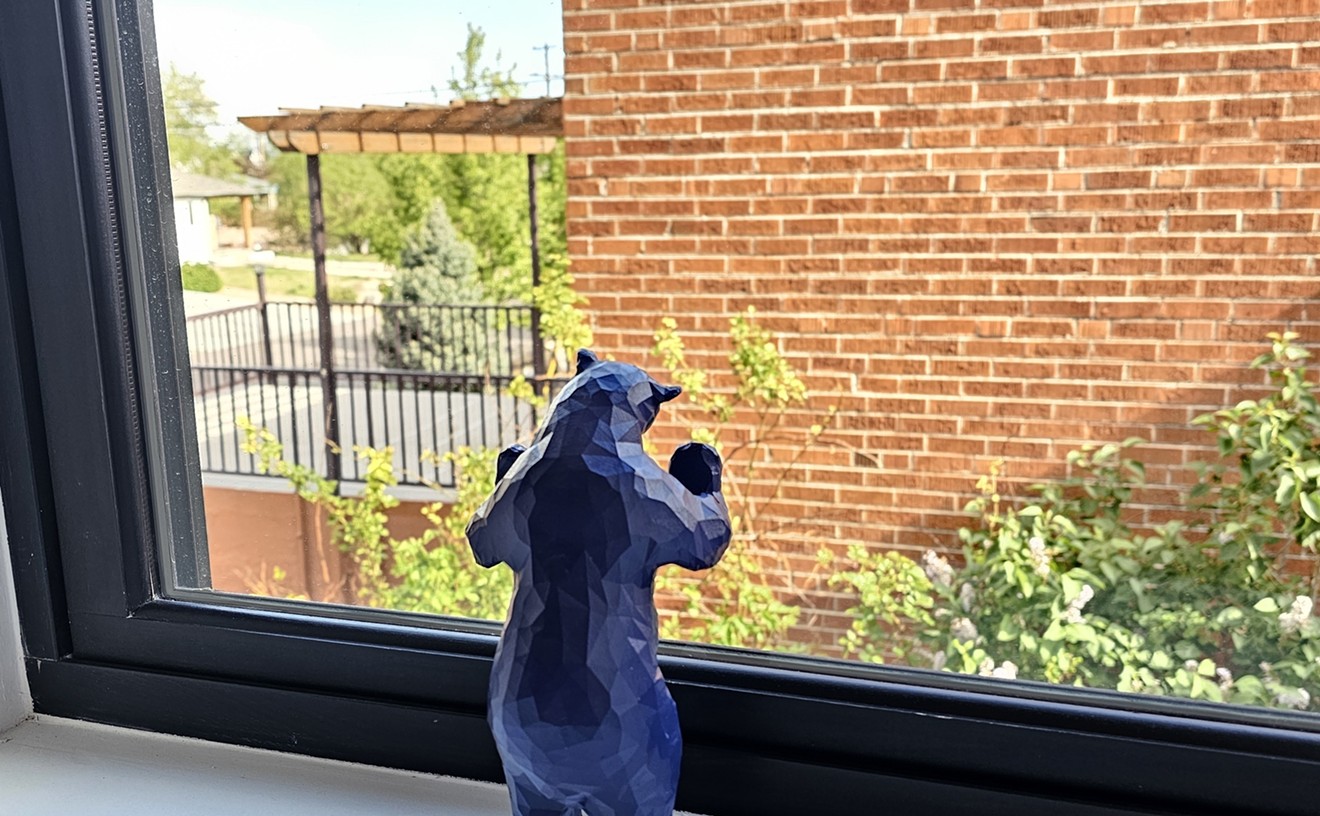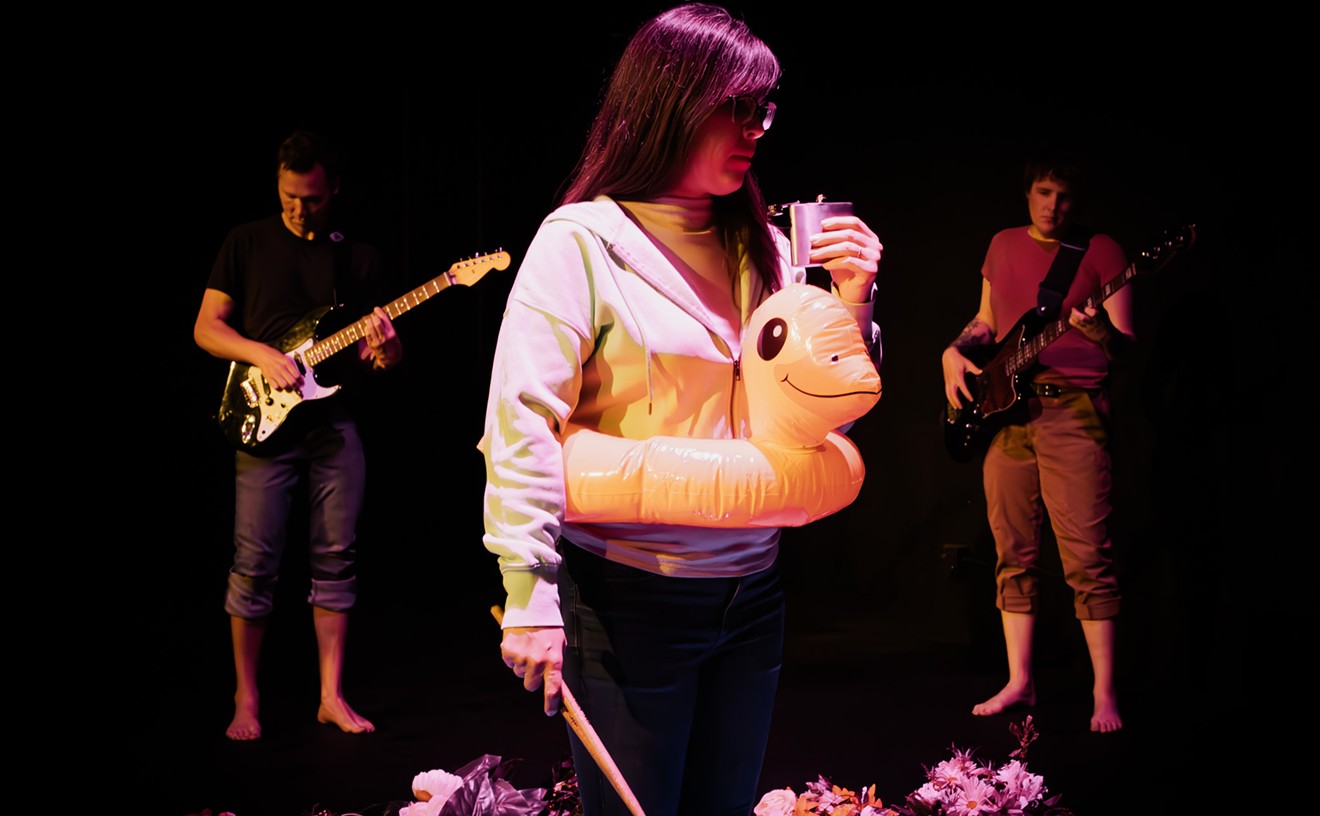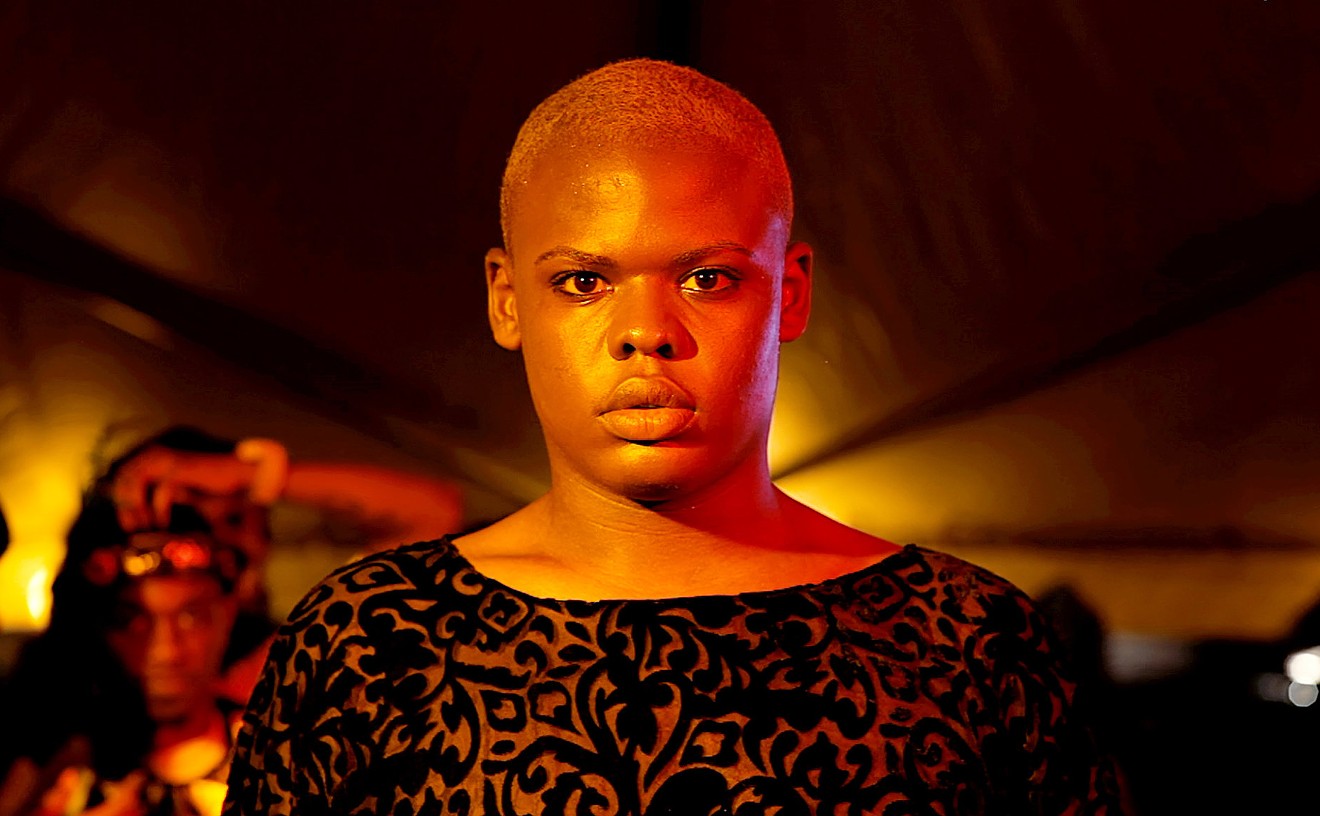Amy Metier: Redaction, the featured attraction at the William Havu Gallery, covers all the walls in the main-level galleries, including those ad hoc spaces under the mezzanine. The show is so eye-popping, it’s almost overwhelming, with a unifying palette that’s partly shared among the paintings and expanded upon in the works on paper. Amy Metier lives in Boulder and maintains a studio in Denver; over the years, she’s built a substantial reputation as a painter, with pieces in the collections of the Denver Art Museum and the Kirkland Museum, where a Metier print is included in the Near and Far exhibit on view now.
Though her approach in the paintings is definitely related to abstract expressionism, there’s also a sense of post-impressionism pushed to its limits. Metier is clearly taking off on still-life scenes in many of the pieces, on landscapes in others, but she has almost completely hidden the original subject beneath layers of boldly, expressively applied strokes of paint using the representation element as a guide to the compositions, not the details. You can almost see one of those still-life arrangements in the foreground of “Appian Way,” with the suggestion of the landscape unfolding behind simply as a dense tangle of lines, only a few of which are evocative of recognizable forms. It’s the colors that carry the illusion, since they range from earthy sand and burnt orange at the bottom to sky blues and whites at the top. Other standouts done in Metier’s signature style include the closely related “Naranja” and the airier and more linear “She Ghost.”
The works on paper are different and have a neo-dada air. A lot of artists do works on paper that are extensions of their paintings, but here Metier embraces specific attributes of collages and prints that are distinct from those associated with paintings. In the mixed-media “Nine Lives,” for example, Metier lays in red paint that is semi-transparent in places, then covers that with torn receipts and other documents, as well as envelopes and painted bits of paper. These elements function like a screen in front of the richly painted reddish and pinkish ground.
Metier is a colorist, and she taps a range of gorgeous colors instinctively, juggling the varied shades so that they contrast with or complement the adjacent tones. Her eye is pretty much unerring. Interestingly, she told me that she wasn’t sure the palettes of the varied pieces would work together until she saw them all in the gallery — where everything interrelates perfectly.
Over at K Contemporary is an equally impressive show — Michael Dowling: You Should Have Seen the Other Guy — that throws abstraction and representation into a blender. Unlike Metier’s work, Michael Dowling’s paintings and drawings tilt toward realism, with the portrait subjects largely recognizable even though he has substantially altered them, theatrically crossing out, covering over or selectively exposing different parts of the sitter’s faces, in the process turning the pieces into abstract hybrids. The underlying renderings have an Old Master-ish quality, which is reinforced by the romantically archaic clothing and hairstyles of the subjects. A Denver native, Dowling attended the Scuola Lorenzo de’ Medici in Florence, studying with the artist duo Rosenclaire, a pairing of Rose Shakinovski and Claire Gavronsky. He graduated in 2002 and the following year returned to Denver, where he continues to live and work. But he remains in touch with his Florentine teachers, whom he regards as his key mentors.

"Study for Acolyte", charcoal and chalk on paper (L) and "Here's to hoping you like me like that," oil on panel (R), both by Michael Dowling.
Jordan Spencer
Though the paintings are very impressive, Dowling sees drawing as the underpinning of his entire oeuvre, and some of the strongest pieces here are his charcoal drawings. One that I’ve thought about several times since I saw it is “I have a better chance if you’re blindfolded,” in which a thick bar of rapidly done charcoal strokes blocks out the top of a woman’s head.
The art world was seriously impacted by the Great Recession a decade ago, and then the coming-of-age of the millennial generation, both of which led to major shifts in taste. Some kinds of work, such as traditional realism, have had a hard time finding a place in this new reality. Abstraction has not only survived tough economic times, but has found an expanded audience, as well.
Amy Metier, through June 9, William Havu Gallery, 1040 Cherokee Street, 303-893-2360, williamhavugallery.com.
Michael Dowling, through May 26, at K Contemporary, 1412 Wazee Street, 303-590-9800, kcontemporaryart.com.


